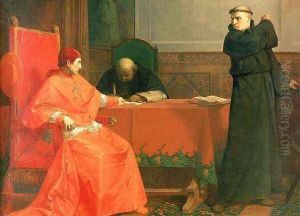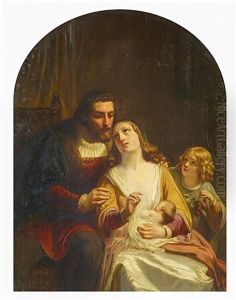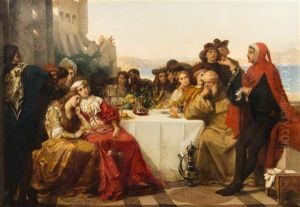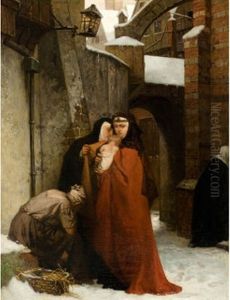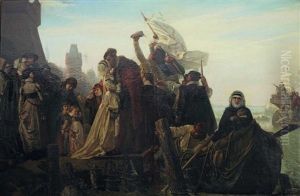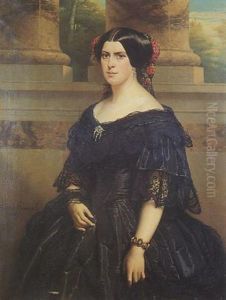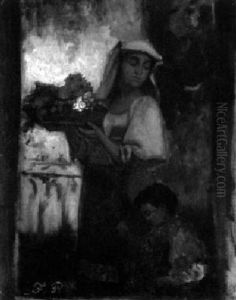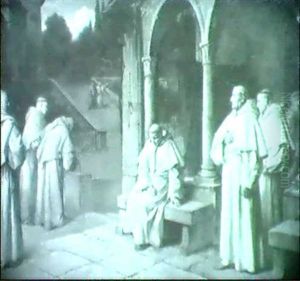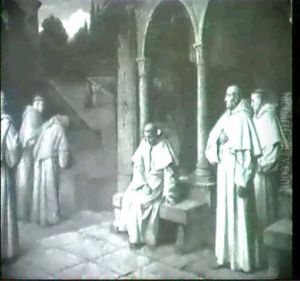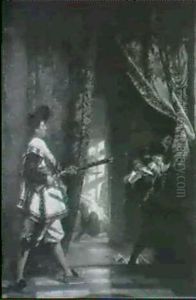Ferdinand Wilhelm Pauwels Paintings
Ferdinand Wilhelm Pauwels was a significant Belgian painter associated with the Romantic and Realist movements of the 19th century. Born on January 26, 1830, in Ekeren, which is now a district of Antwerp, Belgium, Pauwels demonstrated an early interest in art that led him to study at the Royal Academy of Fine Arts Antwerp. There, he was a student of Gustaf Wappers, a prominent figure in Belgian Romanticism.
Pauwels' talent soon earned him scholarships, allowing him to further his studies abroad. He spent time in Paris and then moved to Germany, where he worked for several years. In Dresden, Pauwels took a position at the academy and became a professor, influencing a generation of artists. His style during this period was characterized by detailed realism and often depicted historical and genre scenes.
He returned to Belgium in 1870 and continued to work and teach, becoming a director at the Academy of Fine Arts in Antwerp. Pauwels is perhaps best known for his historical paintings, which reflected a scholarly approach to the depiction of events from Belgium's past. His works are noted for their technical precision, narrative clarity, and vibrant use of color. Pauwels' paintings are part of numerous public collections, reflecting his status as a respected artist of his time.
Ferdinand Wilhelm Pauwels' contribution to the art world went beyond his paintings; his influence as a teacher shaped the skills and styles of many students. He died on May 26, 1904, in Dresden, but his legacy continues through his works and the impact he had on the artists who followed him.
